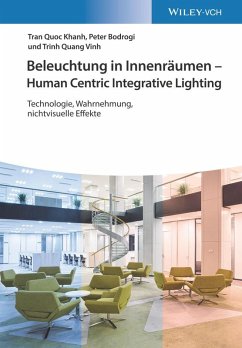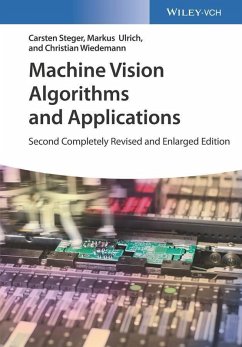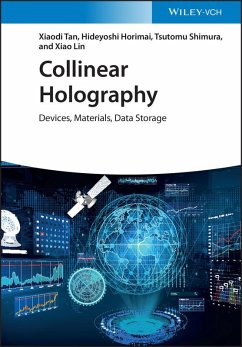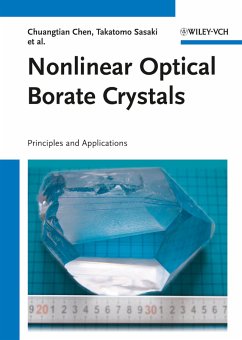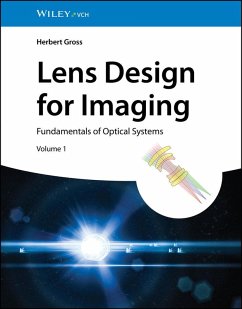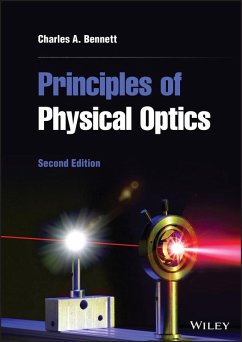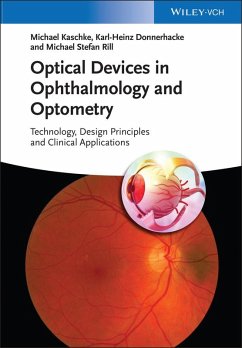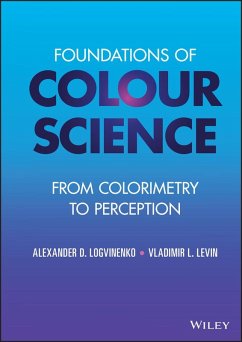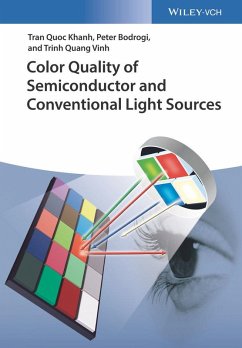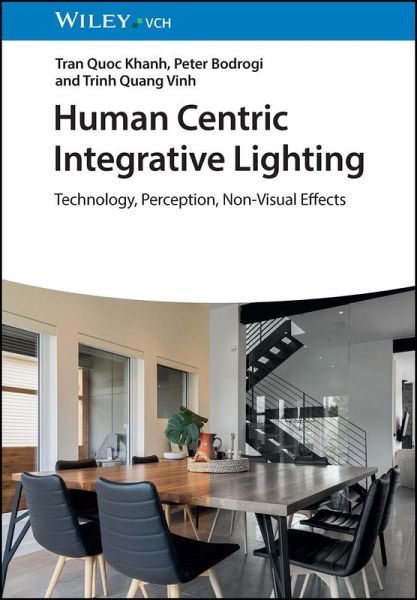
Human Centric Integrative Lighting (eBook, PDF)
Technology, Perception, Non-Visual Effects
Versandkostenfrei!
Sofort per Download lieferbar
142,99 €
inkl. MwSt.
Weitere Ausgaben:

PAYBACK Punkte
0 °P sammeln!
Human Centric Integrative LightingDetailed presentation of the technical and non-technical aspects of modern lighting and its effect on humansHuman Centric Integrative Lighting provides a highly comprehensive overview of the subject, also referred to as human-centered indoor lighting technology; taking a practice-oriented approach, scientific findings in the field are condensed into models that can be directly used by developers.Written by leading scientists in the field of lighting technology, Human Centric Integrative Lighting includes detailed information on: Fundamentals of lighting techn...
Human Centric Integrative Lighting
Detailed presentation of the technical and non-technical aspects of modern lighting and its effect on humans
Human Centric Integrative Lighting provides a highly comprehensive overview of the subject, also referred to as human-centered indoor lighting technology; taking a practice-oriented approach, scientific findings in the field are condensed into models that can be directly used by developers.
Written by leading scientists in the field of lighting technology, Human Centric Integrative Lighting includes detailed information on:
Providing a comprehensive overview of the current state of development in the field, Human Centric Integrative Lighting discusses validated physiological and psychological perceptual models on which manufacturers of lighting products and suppliers of lighting technology solutions can base key design and development decisions.
lighting products; lighting technology solutions; lighting design; lighting development; human-centered indoor lighting technology; lighting color quality; lighting principles; lighting emotional impact; lighting quality; lighting research
Detailed presentation of the technical and non-technical aspects of modern lighting and its effect on humans
Human Centric Integrative Lighting provides a highly comprehensive overview of the subject, also referred to as human-centered indoor lighting technology; taking a practice-oriented approach, scientific findings in the field are condensed into models that can be directly used by developers.
Written by leading scientists in the field of lighting technology, Human Centric Integrative Lighting includes detailed information on:
- Fundamentals of lighting technology as it interacts with human perception and the current state of interior lighting today
- Basic principles of human centric integrative lighting and its various aspects, such as visual performance, color quality, emotional impact, and correlation of relevant parameters
- Comprehensive lighting quality models and subsequently derived recommendations for the practical implementation of concepts
- Relevant research findings from journals, patent specifications, and standards to provide a unified outlook on the field
Providing a comprehensive overview of the current state of development in the field, Human Centric Integrative Lighting discusses validated physiological and psychological perceptual models on which manufacturers of lighting products and suppliers of lighting technology solutions can base key design and development decisions.
lighting products; lighting technology solutions; lighting design; lighting development; human-centered indoor lighting technology; lighting color quality; lighting principles; lighting emotional impact; lighting quality; lighting research
Dieser Download kann aus rechtlichen Gründen nur mit Rechnungsadresse in D ausgeliefert werden.




